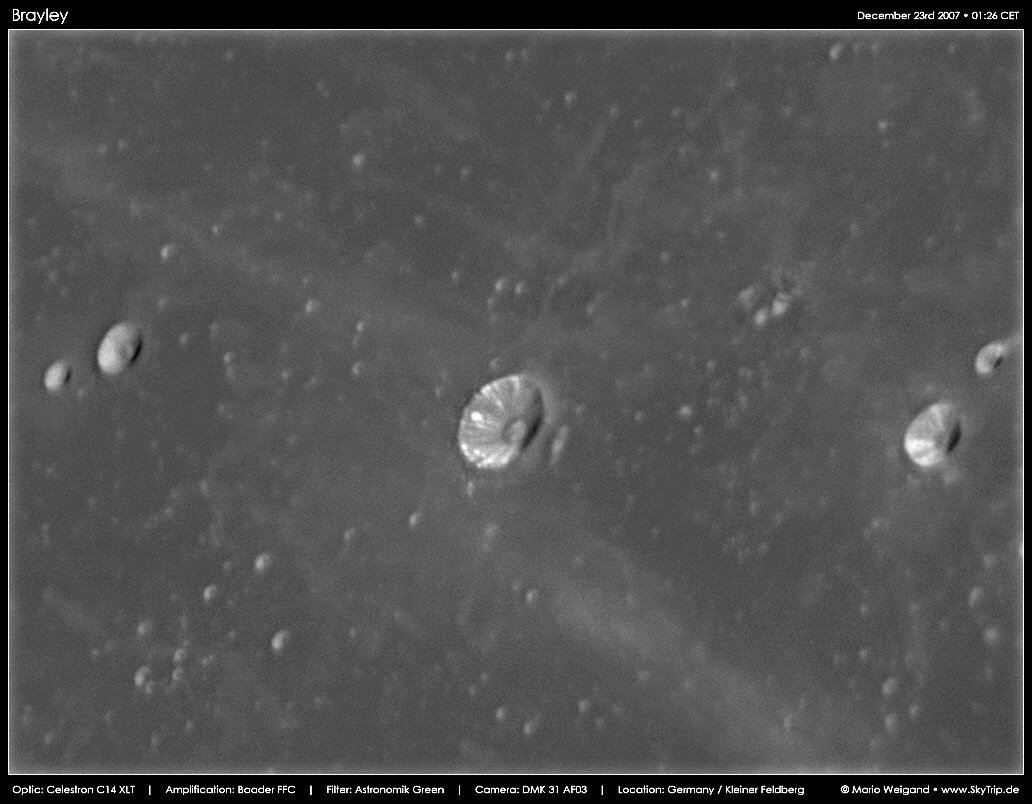
image by Mario Weigand, Offenbach am Main, Germany
Look what I found in the LPOD Photo Gallery! Mario Weigand recently added five high Sun images including this fascinating one of the 14 km wide crater Brayley in far western Mare Imbrium. I have used an unsharp mask filter in PhotoShop to heighten the contrast to better see details and subtleties. Brayley and Brayley B to the east are both banded craters. These are relatively fresh craters with dark or bright streaks down their inner rims. The dark is the normal soil, darkened by solar radiation, and the bright streaks are freshly exposed material that has not yet been radiation darkened. Landsliding downslope of surface rocks exposes the bright material. Older craters generally lack banding because the material on the rims has reached a double equilibrium - all the material has slided that is likely to, and the last landslide was so long ago that all the material is dark. Note the bright round spot on the west side of the rim - I bet that is a small impact crater. Also look at the elongated central peak and notice that Brayley B and C to the west also have peaks. Not all craters this small have central peaks. Two more sights. Brayley is where rays from Copernicus (bottom right) and Aristarchus (top left) meet. Finally, see the white piece of tread north of Brayley? That isn’t a defect, but the Brayley Rille, a notoriously difficult feature to image. High Sun views extend our discovery of subtlety.
Technical Details:
12/23/2007, 0126 CET. Celestron C14, DMK 31 AF03 FireWire-Camera
Related Links:
Rükl plate 19
Mario’s website
Yesterday's LPOD: Welcoming a New LPOD Year
Tomorrow's LPOD: Highland Volcanism?
COMMENTS?
Register, Log in, and join in the comments.



